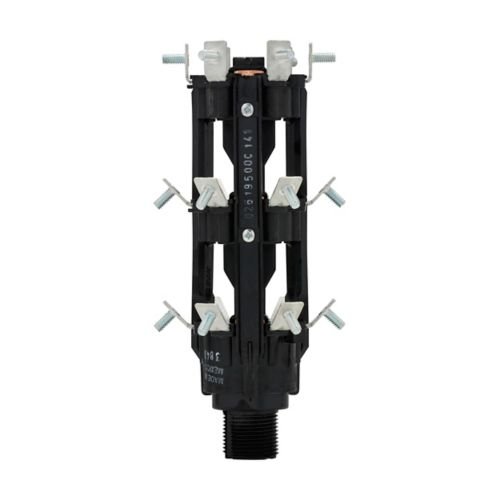In power distribution systems, voltage stability is essential to ensure efficient and reliable energy delivery. One critical component that plays a role in fine-tuning transformer output voltage is the De-Energized Tap Changer (DETC).
📘 What is a DETC Tap Changer?
A DETC Tap Changer is a manually operated switch installed on a transformer winding that allows for changes to the voltage ratio by altering the number of active turns in the coil. As the name suggests, this tap changer can only be adjusted when the transformer is de-energized, i.e., not in operation.
Unlike an On-Load Tap Changer (OLTC), which can change taps while the transformer is energized, a DETC is simpler, more affordable, and highly effective for fixed-voltage or lightly variable systems.

⚙️ How Does It Work?
Tap changers are connected to various points (taps) along the transformer winding. Changing from one tap to another adjusts the transformer’s output voltage, typically within a ±5% range of the nominal value.
DETCs are usually configured with 5 tap positions:
- 2 higher than nominal
- 1 nominal
- 2 lower than nominal
The adjustment is typically done during initial installation or maintenance shutdowns.
🏭 Applications in Power Distribution
DETC tap changers are widely used in:
- Distribution transformers (11kV/33kV class)
- Industrial power systems
- Renewable energy substations
- Utility pad-mounted transformers
🛠️ Eaton Cooper Power Systems – Trusted DETC Solutions
Eaton’s Cooper Power Systems product line offers high-reliability DETC tap changers that are commonly integrated into their distribution transformers, including:
- 📌 CSP Transformers (Completely Self-Protected)
- 📌 VFI Transformers (Voltage Fault Interrupter)
- 📌 Single-phase & three-phase pad-mounted transformers
✅ Key Features of Eaton DETC Tap Changers:
- ±2.5% or ±5% voltage range
- 5-position tap switch
- Robust mechanical design for long-term durability
- Seamless integration into Eaton’s transformer tank design
- UL and IEEE compliant
These tap changers are field-proven for consistent performance in North American and international grid environments.
📌 Why Choose DETC over OLTC?
| Feature | DETC | OLTC |
| Switching condition | De-energized only | Can switch under load |
| Complexity | Simple | Complex, requires maintenance |
| Cost | Lower | Higher |
| Typical use | Distribution transformers | Power transformers (>10MVA) |
🔗 Eaton Cooper Power Series Tap Changer Products
Below are some of Eaton’s Cooper Power series DETC tap changer products:
- 2237500C04: Single-phase, 35 kV, 100 A, Cap wrench/lever/hookstick, #8 AWG terminals (short shank), Block indicator A-E.
- 2237500C13: Single-phase, 35 kV, 100 A, Cap wrench/lever/hookstick, #12-10 AWG terminals (long shank), Block indicator A-E.
- 2237500C21: Two-phase, 35 kV, 100 A, Cap wrench/lever/hookstick, Bolt tabs, Block indicator A-E.
- 2237500C36: Three-phase, 35 kV, 100 A, Cap wrench/lever/hookstick, Bolt tab bent 45˚ w/ 1/4-20 stud, Block indicator A-E.
- 2237179C06M: Three-phase, 35 kV, 300 A, Hotstick/Lever Handle, 1/4-20 studs.
For detailed specifications and installation guidelines, refer to Eaton’s 100 A Externally Operated Tap-Changer Switch Catalog.

💡 Conclusion
If you’re working with transformers that don’t require frequent voltage adjustment, a DETC tap changer is a reliable, cost-efficient solution. With leading manufacturers like Eaton Cooper Power Systems, you can count on field-tested quality and long service life.